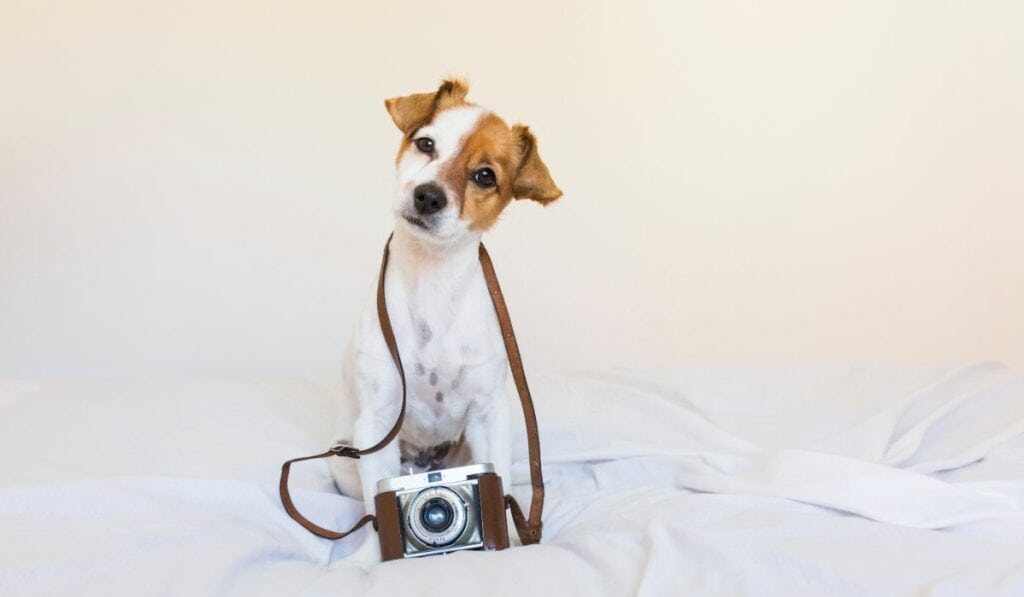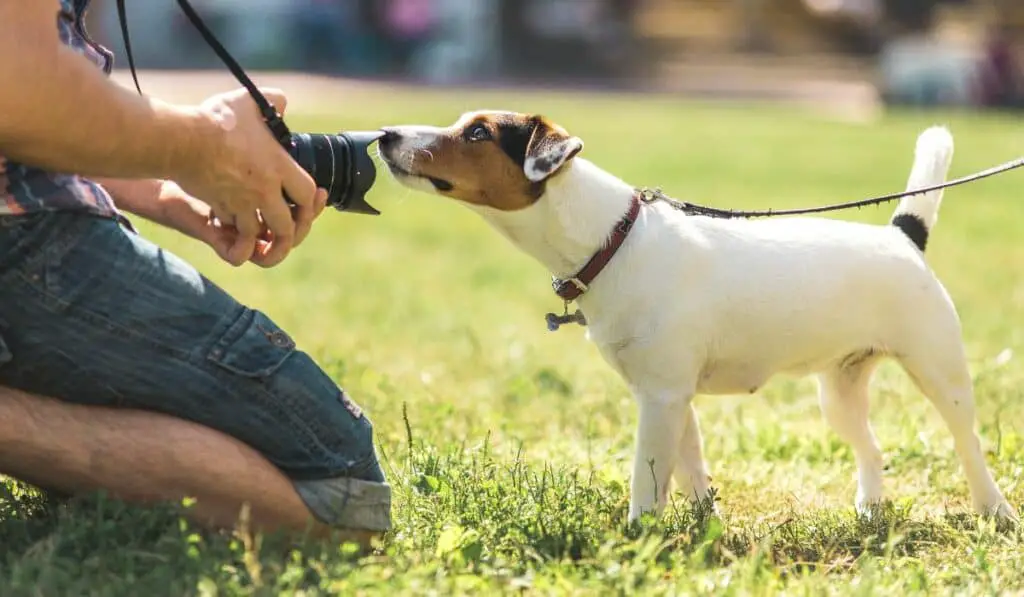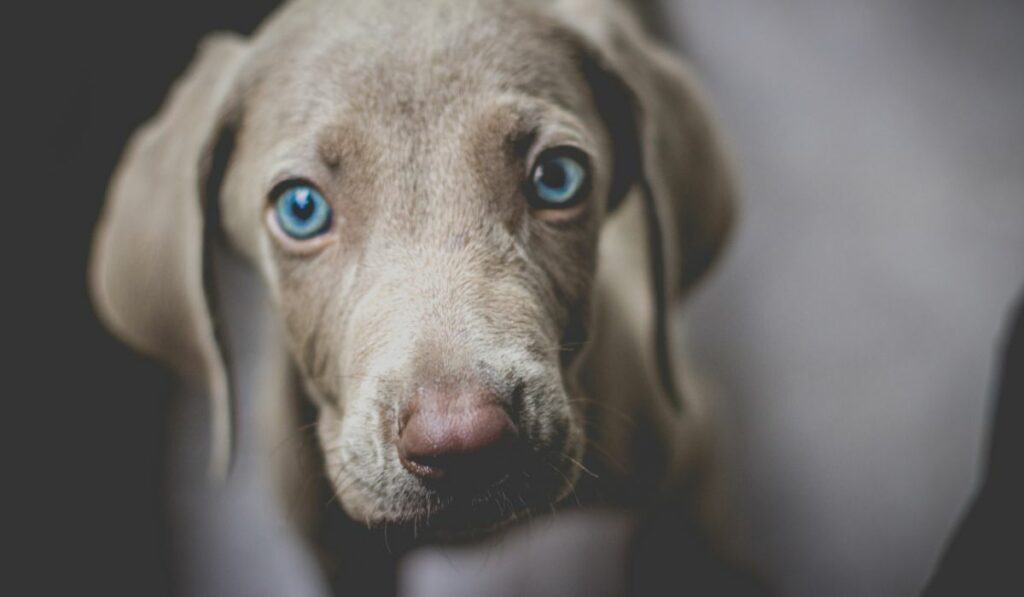Dog photography has grown in popularity. Capturing our furry friends in unique and playful moments is both heartwarming and a delightful challenge.
Whether you’re an aspiring photographer with a passion for pet portraiture or a dog owner wanting to snap memorable shots of your beloved companion, knowing a few helpful tips about dog photography will ensure you get the best results.
In this article, we’ll discuss essential dog photography tips and share ideas on how to make your pet portraits stand out. So grab your camera, and let’s explore the world of dog photography together!
Essential Dog Photography Tips
Dog photography is an art that demands patience, technique, and creativity. From mastering lighting to understanding your dog’s behavior, each tip in this guide is tailored to enhance the quality and emotional impact of your photos.
Technical Aspects of Dog Photography
Before you grab your camera and start shooting, it’s important to understand the technical aspects of dog photography. Once you’re familiar with these technical tips of dog photography, capturing outstanding pet portraits will become much easier.
Camera Settings
Familiarizing yourself with camera settings is crucial. Key adjustments include aperture, ISO, and shutter speed.
- Aperture: For dog photography, use a larger aperture (low f-number) to create a shallow depth of field. This technique helps isolate your pet from the background, making them the focal point of the image. A setting between f/1.8 and f/4 works well for this purpose.
- ISO: Start with an ISO of 400, which is suitable for most lighting conditions. Adjust the ISO based on available light; increase it in low-light situations and decrease it in bright conditions to avoid grainy images.
- Shutter Speed: A faster shutter speed (1/250s or higher) will freeze action, perfect for capturing moving pets. If your dog is particularly active, increase the shutter speed even more to ensure sharp images.

Lighting
Natural light is essential for capturing lively and authentic dog portraits. Here’s how you can make the most of it:
Outdoor Photography
- Golden Hour: Early morning and late afternoon provide the best natural light for outdoor shoots. During these times, the sun is low in the sky, creating soft, diffused light that enhances your dog’s features without harsh shadows.
- Soft Glow: The warm, golden tones during the golden hour add a beautiful, natural glow to your photos, making them more appealing and atmospheric.
- Avoid Harsh Midday Sun: Direct sunlight at midday can create harsh shadows and overexposure. If you must shoot during this time, look for shaded areas to diffuse the light or use a diffuser or reflector to soften the harshness.
Indoor Photography
- Window Light: Position your dog near a large window where natural light streams. This provides soft, directional light that can create beautiful highlights and shadows, adding depth and dimension to your photos.
- Avoid Flash: Flash photography can startle dogs and cause them to react unpredictably. It also tends to create harsh, unnatural lighting and can result in red-eye effects in your dog’s eyes.
Focus
Focus is crucial in dog photography as it ensures clarity and sharpness, highlighting your furry subject’s unique personality and details. Here are two focus modes to consider:
Manual Focus
- Precision: Allows you to set the focus point precisely, which is beneficial for close-up shots or when using a shallow depth of field to isolate your dog from the background.
- Control: This feature gives you complete control over the focus, ensuring sharpness exactly where you want it, such as on your dog’s eyes or nose.

Auto-Focus
- Convenience: Saves time and helps capture sharp images, especially when your dog moves.
- Tracking: This feature continuously adjusts focus to track your dog’s movements, ensuring it remains sharp even as it moves around.
- Ideal for Action: Perfect for capturing playful or active moments when your dog is in motion.
Choose the focus mode based on your shooting scenario and your comfort level with your camera’s capabilities. Manual focus provides precision for static portraits or controlled environments. For dynamic scenes or when your dog is active, auto-focus in continuous mode ensures you don’t miss any moment of the action.
Exposure
When setting the focus, it’s also essential to pay attention to exposure. Here’s how to ensure you get the best light levels for capturing details in both highlights and shadows:
Exposure Considerations
- Balanced Exposure: Aim to capture details in both bright and dark areas of your dog’s fur and surroundings. Adjust your camera’s settings to achieve a balanced exposure.
- Exposure Compensation: Use your camera’s exposure compensation feature to adjust the exposure settings as needed. Increase it to brighten the image or decrease it to darken it, depending on the lighting conditions.
- Histogram: Refer to your camera’s histogram to monitor the light distribution in your image. This helps ensure you’re not losing details in either highlights (right side of the histogram) or shadows (left side).
Shoot in RAW Format
Another important tip in dog photography is to always shoot in RAW format. Shooting in RAW format provides greater flexibility and control when editing.
RAW files contain more robust data, allowing you to experiment and adjust the photos without compromising image quality. This flexibility is particularly valuable when correcting exposure, color balance, and fine details, ensuring your final images are of the highest quality.
Composing The Shot
A well-composed shot can significantly elevate your dog photography. To create impactful images of your furry friend, consider the following dog photography tips:
- Perspective: Get down to your dog’s eye level. This act establishes trust and intimacy, enhancing the connection between the viewer and the subject. Don’t hesitate to experiment with different angles to find the most flattering perspective.
- Rule of Thirds: Use the 3×3 grid to place your dog’s eyes or focal points at intersections. This balances out the composition and makes it visually appealing.
- Framing: Utilize natural frames like tree branches or doorways to create a captivating frame around your dog. This not only adds depth to the image but also enhances the center of attention.
- Background: Be mindful of your background. Opt for simple, uncluttered backgrounds to keep the focus on your dog. For classic portraits, a black background can create a timeless look.
- Bokeh: Achieve a pleasing bokeh effect with a wide aperture (small f-number) to create a shallow depth of field, blurring the background. This helps your dog stand out in the photo.
- Zoom and Crop: Feel free to zoom in or crop the image to focus on specific details, like your dog’s eyes or expressive face.
Working With Your Dog Subject
Understanding your dog’s personality is key to capturing their true essence in photographs. Each dog has a unique character and energy, which you should consider when planning and executing your dog photography session.

By tailoring your approach to your dog’s traits, you can create images that genuinely reflect their spirit and personality. Here are some dog photography tips to help you work with your dog subjects effectively:
Observe And Adapt
Take time to observe your dog’s behavior and energy levels. Some dogs may be energetic and playful, while others may be calmer and reserved. Adjust your approach accordingly to capture their natural demeanor.
Patience Is Essential
Dogs can be unpredictable, and capturing the perfect shot might take some time. Be patient and let your pet dictate the pace of the session. The more relaxed and calm you are, the more comfortable your dog will be in front of the camera.
Use Positive Reinforcement
Reward your dog with treats, toys, or praise to encourage desired behaviors and poses. Positive reinforcement helps create a positive association with the photo session and keeps your dog engaged.

Grab Their Attention
Understand what motivates and interests your dog. Use their favourite toys and dog treats to engage your dog and to capture their attention and personality during the session. By incorporating these elements, you can highlight your dog’s unique character and keep them focused and animated during the shoot.
Respect Their Limit
Respect your dog’s limits during a photography session. Pay attention to signs of fatigue, stress, or discomfort, and take breaks as needed.
Avoid pushing your dog beyond their comfort zone, as this can lead to uncooperative behavior and negatively impact the quality of your photos. Keeping the session enjoyable and stress-free will help capture your dog’s true personality and create more natural and engaging images.
Capture Candid Moments
Sometimes, the best shots come from spontaneous moments. Be ready to capture candid expressions and interactions that showcase your dog’s true personality. These unplanned, natural moments often produce the most memorable and authentic photos.
By understanding and respecting your dog’s personality traits and preferences, you can create a comfortable and enjoyable photo session that brings out the best in your furry subject.
Post-Processing and Final Touches
After you’re done, it’s time to enhance and perfect the photos using post-processing techniques. Don’t worry if you’re new to editing. With a little practice and the right tools, you can create stunning, top-quality photos of your furry friend.
Cropping
One important aspect of editing is cropping. Cropping is a powerful tool in post-processing that can significantly improve your dog photos. By removing distractions or unwanted background elements, you can create a cleaner, more focused image that draws attention to your subject.

Another key benefit of cropping is balancing the overall composition. Adjusting the framing of your photo can enhance its visual appeal and ensure that the elements within the frame are harmoniously arranged. Focusing on your dog’s expressive eyes or other unique features can add depth and character to the photo, making it more engaging.
Remember to apply the rule of thirds when cropping; this technique divides the frame into a 3×3 grid and positions key elements along these lines or at their intersections, resulting in a more balanced and visually pleasing composition.
Color Correction And Enhancement
Color correction and enhancement of dog fur in photos can significantly improve the final image. Start by identifying any unwanted color cast and use white balance tools to adjust the overall color balance, making the image cooler or warmer as needed.
Most editing software, like Lightroom or Photoshop, offers a white balance tool where you can use the temperature slider or manually set the white balance using a neutral gray or white area in the photo.
To boost the vibrancy of your dog’s fur, eyes, and other features, use selective adjustment tools. Increase the vibrance to enhance colors without over saturating them, and use the saturation slider sparingly to avoid unnatural colors. Maintaining a natural look is crucial, so make subtle adjustments and frequently compare with the original image.
Final Touches
Consider adding subtle elements that highlight your dog’s personality or characteristics, such as accentuating their fur texture or capturing a playful expression. Incorporate these aspects tactfully to keep the photo natural and authentic.

Adjust the contrast and exposure to enhance the overall image, bringing out details and creating a more dynamic composition. Use the clone or spot removal tool to eliminate blemishes and imperfections, ensuring a clean and polished look.
Finally, sharpen the image, focusing on your dog’s eyes or other essential areas to add clarity and make the photo stand out.
Sharing Your Dog Photography
Sharing your dog photography can be profoundly fulfilling. It offers a platform to demonstrate your photographic skills and deep affection for your furry companions, and especially crucial if you aspire to be a pet photographer.
The easiest method to showcase your work is through social media. Sharing on platforms like Instagram, Facebook, and Twitter allows you to reach a broad audience. Use relevant hashtags to increase visibility. Tag locations or local businesses to further enhance your reach and engage with your audience by responding to comments and questions.
In addition, consider to create a dedicated website or online portfolio to establish a more credible online presence and attract potential clients. A well-designed website enables you to showcase your best work, provide details about your pet photography services and pricing, and allow visitors to contact you effortlessly.
Don’t forget local print and display options. Contact pet stores, dog parks, or veterinary clinics about showcasing your work in their spaces, or better yet, volunteer at local shelters. This can help you reach a larger audience and gain potential client referrals. By combining social media, an online portfolio, and local networking, you’ll effectively share your dog photography with the world.

Get the 7 Biggest Training Mistakes free report!
Final Thoughts

In conclusion, dog photography requires patience, technique, and creativity to capture your pet’s true essence. By mastering your camera settings, using natural light, and paying attention to composition, you can create stunning images that showcase your dog’s unique personality.
Post-processing techniques further enhance your photos, allowing you to present your best work. Sharing your dog photography through social media, a dedicated website, and local networks can help you reach a wider audience and establish your presence as a skilled pet photographer.
With these dog photography tips, you’ll be well-equipped to capture beautiful and memorable portraits of your furry friends. Happy snapping!

This is great